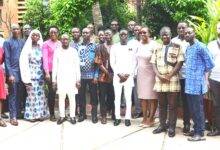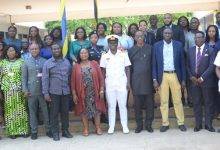The import of the axiom “Forewarned is forearmed” implies that when we are empowered with the adequate information and knowledge about an issue, it gives us the tactical advantage to triumph over something that would have subdued us, if we did not forearm ourselves.
This message is more relevant to us, as we take preventive healthcare, especially HIV/AIDS (Human Immunodeficiency Virus/Acquired Immunodeficiency Syndrome) prevention and control more seriously, in our healthcare delivery system, given that about 375,000 people are living with HIV/AIDS in the country.
According to the Voluntary National Review Report on the Implementation of the 2030 Agenda for Sustainable Development, June 2019, the 2017, sentinel report estimates “HIV prevalence rate in Ghana as 1.67 per cent, representing a decline from 1.70 per cent recorded in 2016.”
It adds that the number of estimated new HIV and AIDS infections have not recorded significant reduction from 2013 to 2017. “Indeed new infections increased from 2013 to 2015 but declined from 19.57 in 2015 to 19.1 in 2017.”
According to the report, Greater Accra and Ashanti regions have the highest number of HIV population for all age groups while Upper East and Upper West regions have the lowest.
Moreover, Greater Accra and Ashanti regions have the highest new HIV infections, whilst Upper West has the least.
“Prevention of mother-to-child-transmission and coverage of pediatric Anti-Retroviral Therapy (ART) remains low as stigma and discrimination continue to harm uptake of services,” the report stresses.
On the occasion of the World AIDS Day, which was marked yesterday, it is important to bring to public notice the menace of the biggest health challenge facing mankind, and to forearm ourselves because we have been cautioned about the HIV/AIDS pandemic in the country already.
Consequently, it is now time for us to be warned, that is to be bold enough to test for our HIV status. Once we test and know our status, it would empower us to lead responsible lifestyles.
We have adopted the “Treat all” policy in 2016, aimed at making every People Living With HIV (PLHIV) have access to treatment to increase the uptake of the ART service by infected people.
The “90-90-90” strategy adopted in 2017 as part of a vigorous policy implementation toward ending HIV/AIDS, seeks to ensure that by 2020, all 90 per cent of PLHIV will know their status, 90 per cent of all diagnosed cases will receive sustained ART, and by receiving the sustained ART, the infected people will have the viral load in them suppressed and lead a normal life and be productive.
Certainly, society has advanced and made tremendous strides in medical healthcare: the diseases that used to devastate society many years ago, can no longer do that because of the advancement in modern medical healthcare, giving the hapless hope and reprieve.
Significantly, we are marking this year’s World AIDS day on the theme “Communities make a difference – Help end AIDS”, couched from the global theme “Communities make a difference.”
The choice of the theme underscores the significance of effective community engagement in addressing challenges facing society that are community related.
Indeed, husband and wife make a family, family makes a community, and community makes a nation which then becomes comity of nation.
It appears, however, that our past strategies may not have yielded the much desired results, hence the need to re-strategise by placing communities in the centre of affairs.
This is because, the PLHIV got the infection in the communities and the communities can make a difference in prevention and control, as well as in the general well-being of society.
On the occasion of World AIDS day, Ghanaian Times, hastens to remind that 2020 is just 30 days away, and the question is, have we done well-enough to achieve the target “90-90-90 Treat- all policy?”
Your guess is as good as ours!





